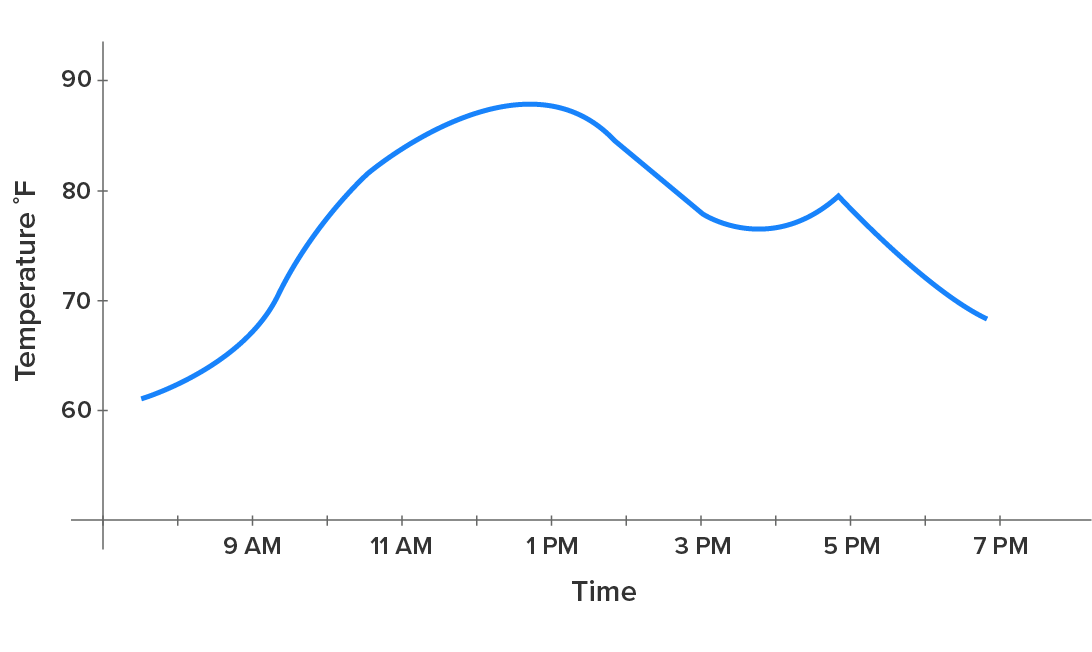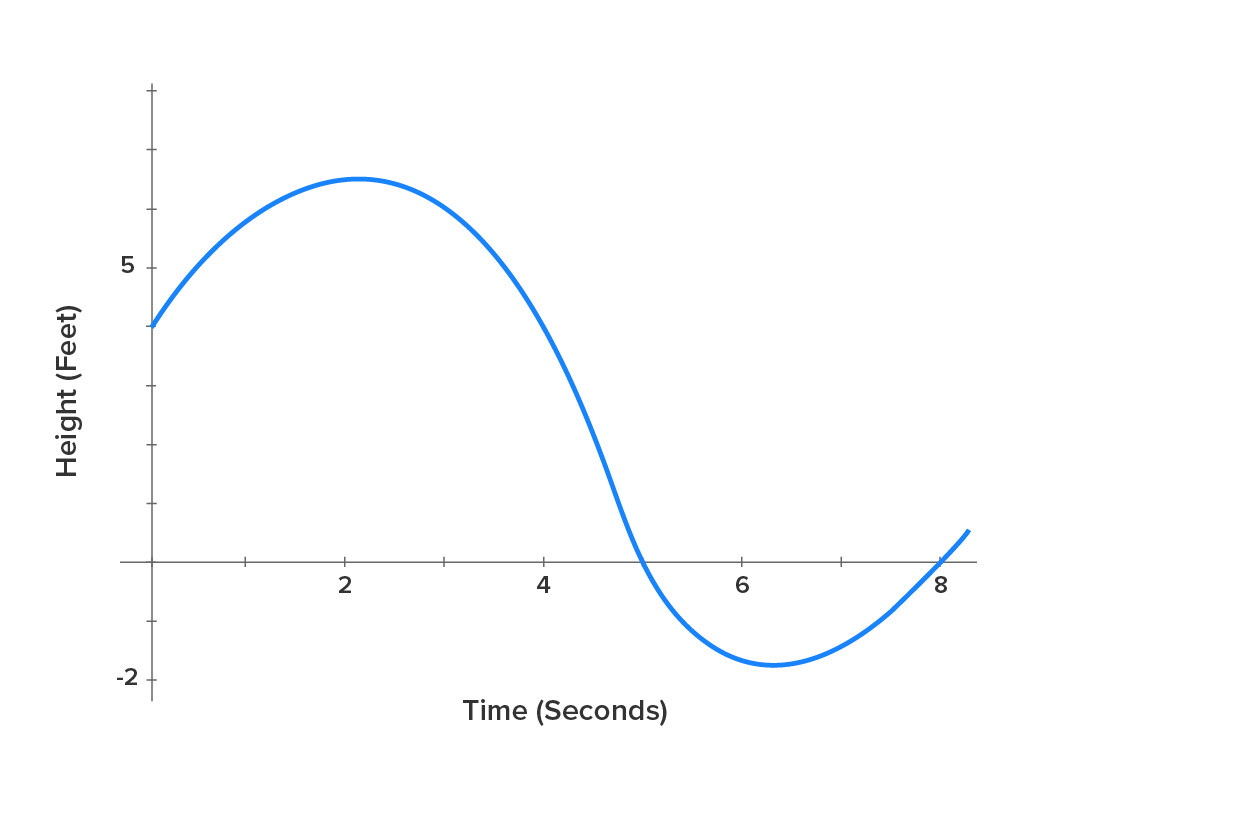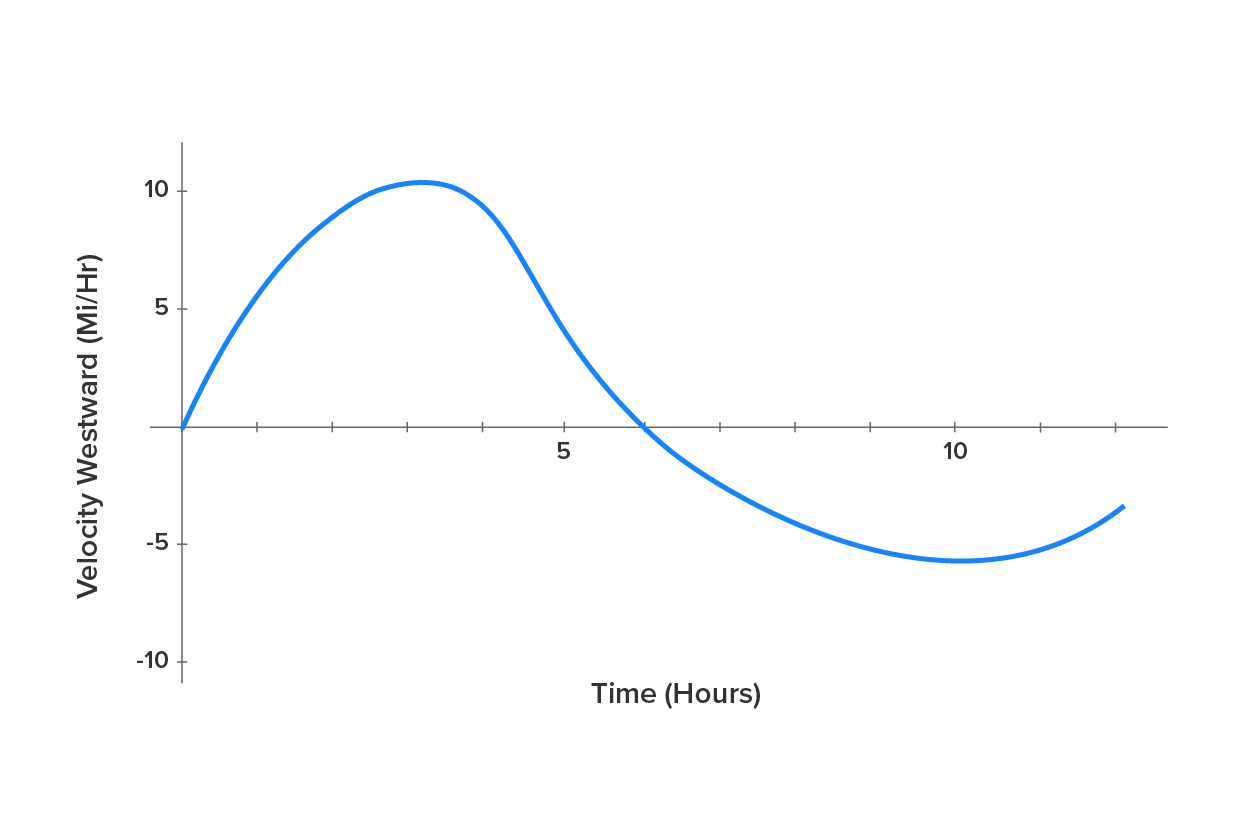In this lesson, you will investigate the different kinds of information that can be extracted from graphs. Specifically, this lesson will cover:
1. Information Related to a Graph
Consider the graph below, which shows the temperature throughout the day.

1a. Using Specific Points on a Graph
Using the graph above, we can extract the following information by examining points on the graph:
- At 9 AM, the temperature is roughly
 F.
F.
- The high temperature of the day was recorded at 12:30 PM and was about
 F.
F.
1b. Using the Shape of a Graph
Using the same graph, we can extract the following information by observing the shape of the graph.
- The temperature appears to have risen most sharply at 9 AM.
- The temperature dropped after 1 PM, but then rose slightly around 3:30 PM, then started falling again at 5 PM.
- At 5 PM, the graph started falling sharply and suddenly. It’s possible that a cold front came through, it started raining, or a storm came through.
2. Applications of Graphs to Real-Life Situations
-
Consider this graph, which shows the height of a diver after jumping off the diving board.

How long was the diver underwater?The diver entered the water after 5 seconds and surfaced again after 8 seconds, so this means that the diver was underwater for 3 seconds.
-
The graph below shows the velocity (heading west) of a boat heading away from St. Thomas (to the west).

In this lesson, you learned that graphs are very useful since they are a visual representation of a situation. They can be created quite easily using technology, so it is important to consider many aspects of the graph. You learned how to extract information related to a graph by using specific points on a graph and using the shape of a graph. You also explored several applications of graphs to real-life situations to apply your knowledge of the different kinds of information that can be extracted from graphs.
SOURCE: THIS TUTORIAL HAS BEEN ADAPTED FROM CHAPTER 0 OF "CONTEMPORARY CALCULUS" BY DALE HOFFMAN. ACCESS FOR FREE AT WWW.CONTEMPORARYCALCULUS.COM. LICENSE: CREATIVE COMMONS ATTRIBUTION 3.0 UNITED STATES.

 F.
F.  F.
F. 
